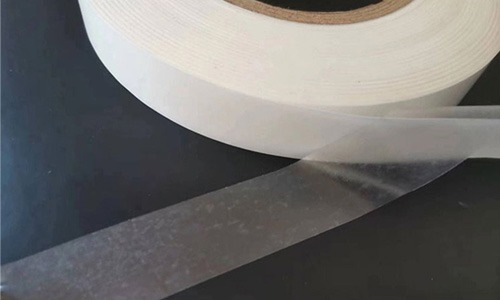
Hot Melt Adhesives (HMAs), particularly thermoplastic polyurethane (TPU)-based variants, play a critical role in textile processing, especially within the apparel manufacturing sector. They are extensively utilized for key applications including nonwoven bonding, carpet seam joining, garment lining attachment, and zipper fixation. To ensure effective performance in textile applications, HMAs must meet the following core requirements:
Exceptional Bonding Strength: Ensures joint integrity under various stresses.
Superior Flexibility and Elasticity: Maintains compatibility with textile substrates, ensuring comfort and avoiding stiffness or brittleness.
Laundry Resistance (Washing/Dry Cleaning): Withstands repeated laundering cycles without delamination or significant performance degradation.
Resistance to High-Temperature Steam: Textile finishing processes often involve steam treatment (typically >115°C), necessitating HMAs with sufficiently high softening points (significantly exceeding 115°C) and thermal stability.
Adequate Thermal Stability: Achieved through controlled crystallinity to ensure performance stability at processing and use temperatures. For example, polyamide (PA)-based HMAs generally require a minimum polymer content of 45 wt% to meet this criterion.
Low Processing Viscosity (Specific Applications): Essential for bonding highly delicate fabrics, enabling sufficient wetting and penetration without substrate damage.
Primary Applications of TPU HMAs in Textiles:
1. Direct Fabric Bonding (Replacing Stitching)
Principle: Utilizes HMAs to directly bond fabric layers, replacing traditional sewing.
Advantages: Significantly reduces labor intensity in garment production, enabling efficient manufacturing; yields seams with precise fit and finish, enhanced durability, and secure bonding.
Common Materials: Polyamide (PA), polyester (PES), and polyurethane (TPU) HMAs are widely used. TPU HMAs are particularly suitable for applications demanding high elasticity and flexural endurance (e.g., sportswear, lingerie, stretch fabric panels) due to their outstanding flexibility, elasticity, abrasion resistance, and low-temperature performance.
2. Fusible Interlining Processing
Principle: Fusible interlinings are produced by uniformly applying HMA powder or granules (via methods like powder scattering, paste dot, powder dot, or double dot coating) onto a base fabric (substrate). During use, the interlining is cut to shape, placed against the fabric reverse side, and bonded via heat and pressure (e.g., ironing).
Function & Advantages: Acts as a garment's "structural support" layer, providing shape retention, crispness, and drape; streamlines garment assembly and reduces production time; enhances apparel lightness, aesthetics, comfort, and wash/wear durability.
Core HMA Requirements:
Colorless and odorless (avoids affecting fabric appearance and wearer comfort)
Soft hand feel (ensures garment comfort)
Rapid bonding capability (enables high-speed production)
Excellent resistance to washing and dry cleaning
Non-penetrating and non-staining (preserves fabric properties)
Lightfastness (prevents yellowing or degradation)
Common Materials: Ethylene-vinyl acetate (EVA), polyamide (PA), and high-density polyethylene (HDPE) powders dominate. TPU HMAs offer distinct advantages in premium apparel, stretch fabric interlinings, and applications requiring exceptional hand feel and wash resistance due to their superior softness, elastic recovery, low-temperature flexibility, and hydrolysis resistance. Selection depends on interlining type and specific application requirements.
3. Carpet Back-Coating
Principle: Involves applying molten HMA to the carpet backing to anchor tufts and bond secondary backing materials (e.g., laminated backings, anti-slip layers), enhancing structural integrity and durability.
Common Materials: Base polymers are typically ethylene copolymers (e.g., EVA, ethylene-ethyl acrylate (EEA), ethylene-methyl acrylate (EMA)), with EVA being predominant. TPU HMAs are increasingly valued in high-performance (e.g., commercial carpets, automotive carpets) or environmentally demanding applications due to their exceptional abrasion resistance, high bond strength, superior weatherability, low-temperature impact resistance, and eco-friendly attributes (offering solvent-free, low-odor options).
 HOT LINE: 086-577-65159218
HOT LINE: 086-577-65159218












